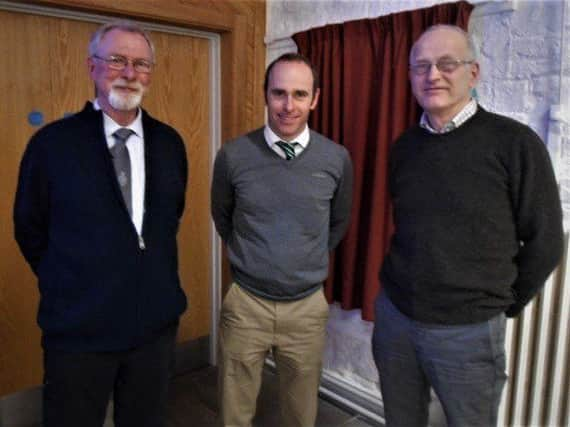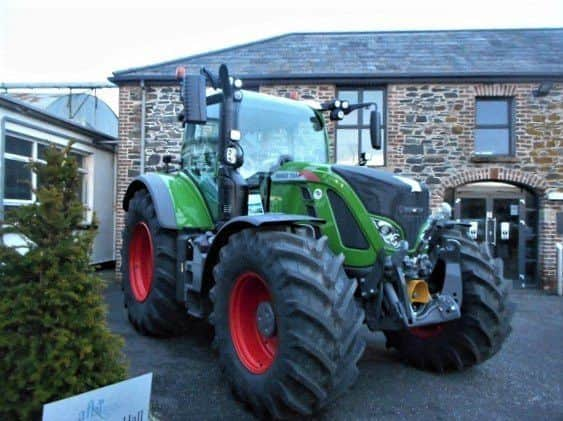Fendt – its origin, story and vision


Fendt, based at Marktokerdorf in the picturesque area of Southern Germany, is well known for its prestige range of tractors. The family business built its first one (known as the Dieselross) back in 1930.
Fendt invests a high proportion of its turnover on research and development and has often been first to develop advanced technology on its tractors. Its innovative developments have included front-axle tractor suspension, suspended cabs, the turbomatic clutch and the stepless, trend setting Vario transmission of which more than 250,000 units have been built since 1995.
Advertisement
Advertisement
As well as having a strong emphasis on engineering/research and development, Fendt also manufactures a very high proportion of its own components including axle components, transmissions and cabs. The company became part of AGCO Limited in 1997. This has facilitated sharing of expertise and manufacturing facilities with the other specialist AGCO group companies.


In this process, Fendt now offers a full range of grassland harvesting, baling, cereals harvesting and crop protection equipment. This suits those markets across the world where larger dealerships favour full-line marketing for efficiencies in administration and staff training. In Germany a large proportion of Fendt tractors are retailed through the co-operative model with one of these having 350 separate outlets alone.
Grassland equipment
The current Fendt range reflects the subsequent AGCO acquisition of well established manufacturers in the grassland machinery sector including the Fella, Lely Forage Division and Welger brands. The range now includes mowers, tedders, windrowers, trailed forage harvesters, self loading forage wagons, balers and wrappers as well as Fendt’s own “Katana” self propelled forage harvester.
Grain crops and arable
There are Fendt versions of each of the AGCO combine harvester ranges (including the new high capacity “Ideal” version), balers (both round and high density big square types) as well as the 24m to 36m boom trailed/self-propelled Rogator crop sprayers.
Tractors
Advertisement
Advertisement
The Fendt wheeled tractor ranges span 70 to 500hp. There are also two rubber-tracked models which are agricultural versions, with the Fendt Vario transmission and Variotronic management system, based on AGCO’s Challenger range.
Market shares
Fendt tractors hold 8% overall market share within the EU. Around 16,800 tractors were built in 2018 with approximately one third sold in the home German market and the rest exported. Fendt Vario tractor ranges are available in several sizes with overlapping engine power. The % of production between each range is: Orchard/vineyard 200V/F/P series-12%, 200- 8%, 300- 14%, 500- 13%, 700- 32%, 800 and 900- 17% and 1000 Vario- 4%. Fendt is market leader in Germany with 24% market share over 50HP in 2018 (where the 240 hp 724 was most popular with 900 units sold). In the UK, Fendt commanded 6.5% of the tractor market in 2018. All Fendt tractors use the Vario transmission and have the same in-cab management controls.
The model ranges include the 200 Vario (72-101 hp) in both standard track widths and narrow track versions for orchard/vineyard use, the 300 Vario (100-133hp), the 500 Vario (124-163 hp), the 700 Vario (174-to 237 hp), the 800 Vario (226-287 hp), the 900 Vario (275-396 hp), the tracked 900 Vario MT (380 -431hp), the 1000 Vario (396-517 hp) and the tracked 1100 Vario MT (457-598 hp).
The popular 700 Vario series is an example, weighing almost eight tonnes, with its range of six models. The most powerful is the 240hp 724 with a power-to-weight ratio of 33hp/tonne and travelling on 650/65R 42 rear tyres. The in-cab Vario-terminal is a touch screen pad on the joystick. This size of tractor is widely used across both livestock and arable farms and is also available with Fendt’s own front-loader. The design policy is to provide a tractor of basic weight and ability to carry its required load, adding extra ballast if required to boost stability or traction. Attendees were able to enjoy a close-up look at its size and features on an actual 724 Vario parked at the talk venue.
Advertisement
Advertisement
The larger 800 Vario series and upwards tractors are more likely to start life on arable or contract operations. The 1000 Vario was the first 500hp standard rigid-framed wheeled agricultural tractor. Technical features include travel speed up to 60kph, big tyres up to 2.35m tall and the option of Vario Grip. This is a system of automatic on-the-move adjustment of tyre pressures to optimise traction and reduce soil compaction in the field.
The rubber tracked 900 and 1100 Vario MT ranges are based on, fellow AGCO company’s, Challenger designs for heavy draft applications. They use the same Vario transmission, engine management systems and ISObus implement control systems as the wheeled tractors.
More details of all of the Fendt product ranges can be viewed on www.fendt.com/uk
Electronic guidance and management systems
The Vario transmission is designed for ease of control via the joystick and can be programmed to maximise work rate within pre-selected engine and travel speed settings. Reduced engine speed during travel on the road is a popular proven fuel economy feature. Others include ABS and Vario Active steering. The latter adjusts steering sensitivity between field and road travel uses.
Advertisement
Advertisement
Variotronic provides GPS steering guidance, variable rate control for spreaders/sprayers and automatic steering as well as recording of performance data.
Fendt tractors offer ISOBUS compatibility and control features such as the in-cab joystick controls for the transmission and implement control settings which are the same across the Fendt ranges. Approximately half of the 16,800 Fendt tractors built last year were supplied with Autosteer.
Future developments
It is anticipated, across the industry, that implement sourced automatic control of the tractor’s transmission, hydraulics and pto will continue to develop. This will sense changing loads on field implements and adjust forward travel speed to suit. For a baler it can stop when the bale chamber is full, complete the wrap cycle and eject the bale without driver assistance. Other examples include the co-ordinated control of the transmission and braking systems on heavy trailed implements. ISObus is an agreed industry standard but continued co-ordination between different manufacturers is needed to avoid potential conflict on issues like reliability and operator safety when various brand tractor/implement combinations are used.
The Fendt e100 Vario electric powered tractor, aimed at municipal and vineyard/orchard type work, now offers a power interface for electrically powered implements and an electrically powered heat pump for cab air conditioning. Fendt has built the X Concept tractor (based on the 700 series) which can supply up to 130kW 700v for electrically powered implements. Some future field operations may also involve using unmanned tractors.
Round up discussion
Advertisement
Advertisement
Following the talk there was discussion around the following topics before Mr Gorman was thanked for presenting such an informative and enjoyable update on the Fendt product ranges.
The Fendt Vario transmission - Its use in other tractors-AGCO/JCB etc; Anticipated transmission service life and repair options; The potential use of driverless tractors; Warranty implications for unauthorised engine remapping; Brexit implications for tractor imports to the UK; Ongoing industry issues of recruitment and training for technicians; Use of remote telematics; Dealer service charges; Isobus compatibility across different machine makes; Percentage of tractors supplied to contractor customers; and International trade for used ex-lease Fendt tractors.